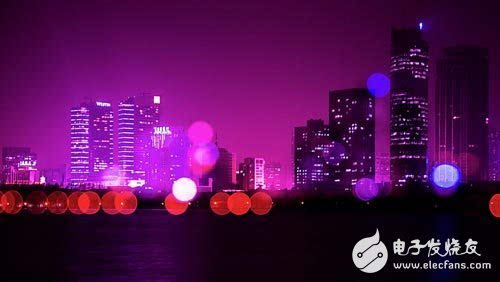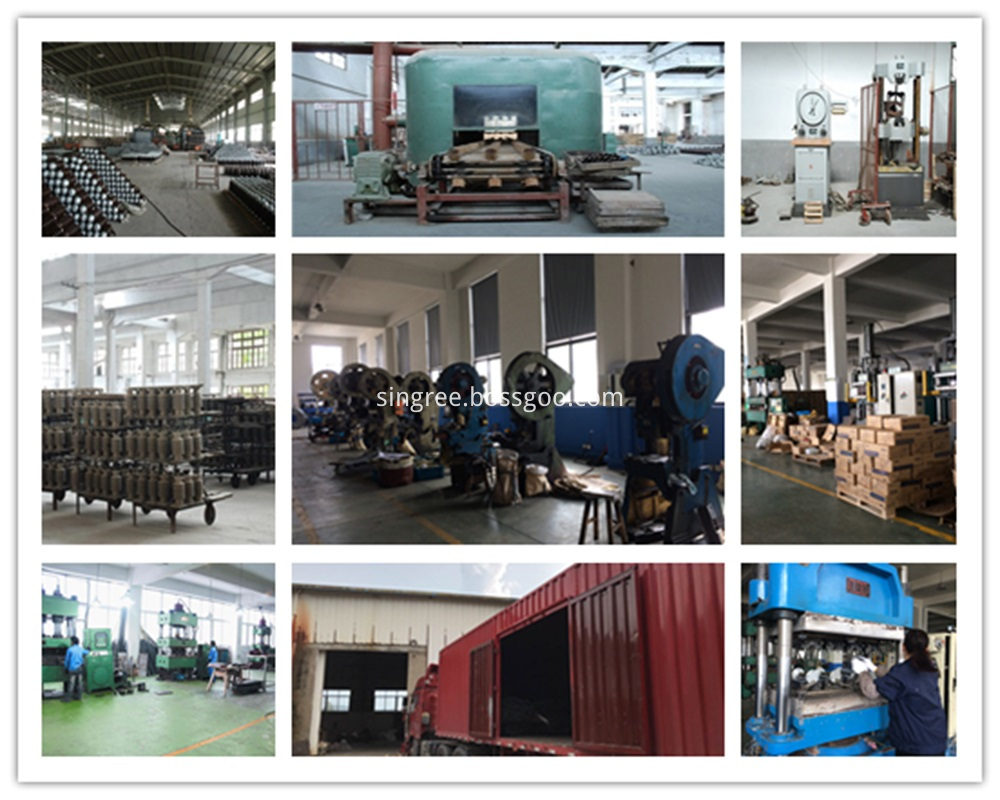50 billion! Landscape lighting stands at the market outlet, LED companies are competing to enter
Landscape lighting refers to lighting projects that have both lighting functions and artistic decoration and beautifying the environment. It is an important application market for LED creative display.
With the construction of smart cities, landscape lighting is playing an increasingly important role in commercial real estate, urban and scenic area planning, and it is also driving the market capacity to usher in a period of rapid improvement.
According to statistics, in 2015, the output value of China's LED landscape lighting market reached 47.8 billion yuan. In 2016, the output value of landscape lighting is expected to reach 50 billion yuan.

The market space is so huge that it will be an irresistible temptation for LED companies that have just experienced a slower-than-expected growth in market demand and a sharp decline in product prices.
In fact, since the beginning of this year, a number of lighting giants have begun to use landscape lighting as an important application market for layout.
Zhou Hu, general manager of Baojian Lighting, once said that “the gross profit of landscape lighting is relatively high, which is a good opportunity for lighting companies.â€
Jiang Guangjun, deputy general manager of Heshan Tongfang Lighting Domestic Center, also believes that compared with indoor lighting, the profit margin of LED landscape lighting is even higher than that of indoor commercials, and the return is better and the customer base is more stable.
"Over the whole year of 2015, the sales of Heshan Tongfang Lighting LED landscape lighting is close to 100 million. From the current market situation, I believe that there is no big problem in doubling in 2016." Jiang Guangjun said.
In fact, optimistic about the landscape lighting market is not only lighting companies, LED supply chain companies are also "thinking."
The argument that “linearity is half of the future†has been circulated in the LED industry, and Mingwei Electronics is also personally promoting the realization of this assertion, applying linear IC to landscape lighting.
“2016 Mingwei Electronics' products are mainly locked in three directions, landscape lighting, LED lighting and display screen. Among them, landscape lighting and display screens strive to win 70-80% of the market.†Li Zhaohua said.
At the moment of diluting profits, low-price competition, and product homogenization, a series of changes have taken place in the LED display market. The market division of labor has gradually become more refined, and some enterprises have begun to shift their development focus to landscape lighting.
It is understood that in October 2015, Lianda's wholly-owned subsidiary Jinda Lighting has successfully won the bid for the “First Phase Project of Wuhan Liangjiang Si'an Landscape Lighting Improvement Project†with a bid price of 277 million yuan.
Liard said that this project is a major lighting project of Wuhan City, which is dedicated to the unique "Wangjiang First Light Show" with unique Wuhan characteristics. It is a well-known urban lighting project in China. The successful bid will enhance Jinda Lighting's project capacity and improve the brand influence of Jinda Lighting, laying a good foundation for future major lighting projects in other cities across the country.
With the acceleration of urbanization, it is believed that in the next few years, whether it is a prosperous city or a second- and third-tier city, landscape lighting can develop rapidly and gradually become the branch of LED lighting application area next to indoor lighting.
Zhao Chunbo, director of Ming Microelectronics Marketing, also said that “the landscape lighting market has great prospects, as the market where the current industry has not yet become a hedge, or will play a booster in the industry.â€
Advantages of LED light source in landscape lighting
LED lighting products have a strong competitive advantage in urban landscape lighting. With the increase in demand for urban lighting projects, it is expected that the industry will continue to maintain high growth rates in the future.
In addition to the five advantages of no mercury, energy saving, material saving, no electromagnetic interference to the environment and no harmful radiation, LED light source has many advantages in the field of lighting, especially in landscape lighting. Such as:
Low-voltage power supply - no high-voltage part, the cost of insulation is much smaller and the reliability is high;
Simple accessories - no starters, ballasts or ultra high voltage transformers;
Simple structure - the biggest advantage of solid light source, no aeration, no glass casing, no gas sealing problem, impact resistance;
Good controllability - fast response time (on the order of microseconds), can be repeated frequently and repeatedly, basically no inertia, not tired;
The color is pure - the color is produced by the semiconductor PN junction itself, pure and thick;
Rich in color - three primary colors plus digital technology, can evolve any color;
Lightweight structure - material saving, saving costs;
The requirements for the strength and stiffness of the luminaire are very low - the small size of the LED luminaire can be seen as composed of LED cells, the smallest LED is only on the order of square millimeters or less;
Flexibility is good - the compactness of the LED light source enables the LED to adapt to the decorative lighting requirements of various geometric sizes and different space sizes, such as: point, line, face, ball, different forms, and even any artistic sculpture of light;
There are many kinds of light sources that can be used for landscape LED street lighting, and the effects, performance, and cost should be considered when selecting a light source. When comparing the cost of different solutions, not only compare the price of the light source, but also compare the comprehensive economic analysis of the whole life period, because some high-efficiency, long-life light sources, although the price is higher, but the use is reduced, the operation and maintenance costs are low. Economically and technically reasonable.
The traditional light sources used in landscape LED street lighting, such as incandescent lamps and halogen lamps, are bright and bright, and have good color rendering properties; however, their luminous efficiency is low and their lifetime is relatively short. It is rarely used. At present, the commonly used floodlight LED street light illumination source is a high-pressure discharge lamp, such as a high-pressure mercury lamp, a high-pressure sodium lamp and a metal halide lamp. These light sources have large power and can realize large-area floodlight illumination. However, the common disadvantage of these sources is that it takes a while for the lamp to stabilize after it has been illuminated; moreover, if the lamp is accidentally extinguished, it needs to wait for the lamp to cool sufficiently before it can be restarted. In addition, these lamps are not easy to achieve dynamic effects such as light color change, and if the color filter is used, the color change can be realized, but this will greatly affect the system efficiency.
As a fourth-generation solid-state light source, LED street lights are illuminated differently from conventional light sources. It uses the recombination of electrons and holes in a semiconductor PN junction to emit light. The difference in lighting patterns determines the essential difference between LED street lights and traditional light sources, and it also has its own unique characteristics.
However, in recent years, light pollution has become more and more serious, and the reason is that LED light source is used in landscape lighting. After the LED light source appeared, many engineers used direct lighting, replacing the floodlighting of HID gas discharge lamps with LED lighting, because the brightness of the LED surface is N times that of HID, so it is easy to produce light pollution. Includes pollution of colored light. The phenomenon of light pollution urgently needs to be controlled from the norm, and this specification should be combined with the standard, and also combined with the design of landscape lighting, and it should be controlled at the time of design.

Cold And Heat Shrinkable Tube
Cold shrink tubing is an open ended rubber sleeve, made primarily from rubber elastomers with high-performance physical properties, that has been factory expanded or pre-stretched, and assembled onto a supporting removable plastic core.Cold shrink tubing shrinks upon removal of the supporting core during the installation process and the electrician slides the tube over the cable to be jointed, terminated or abandoned and unwinds the core, causing the tube to collapse down, or contract, in place. Cold shrink tubing is used to insulate wires, connections, joints and terminals in electrical work. It can also be used to repair wires, bundle wires together, and to protect wires or small parts from minor abrasion. It needs storage in controlled environments with temperatures not exceeding 43 degrees celsius.
The heat shrink tubing is a shrinkable plastic tube used to insulate wires to provide wear resistance and environmental protection for stranded and solid wire conductors, connections, joints and terminals in electrical work. It can also be used to repair insulation on wires or bundle them together to protect wires or small parts from minor wear and create cable entry seals that provide environmental seal protection. Heat shrink tubing is typically made of nylon or polyolefin that shrinks radially (but not longitudinally) to between one-half and one-sixth of its diameter upon heating.


We warmly welcome friends both domestic and abroad to visit our company, if you have any questions, please contact with us directly.
Cold And Heat Shrinkable Tube
Cold And Heat Shrinkable Tube,High Voltage Insulation Tape,Heat Shrinkable Breakout
FUZHOU SINGREE IMP.& EXP.CO.,LTD. , https://www.cninsulators.com